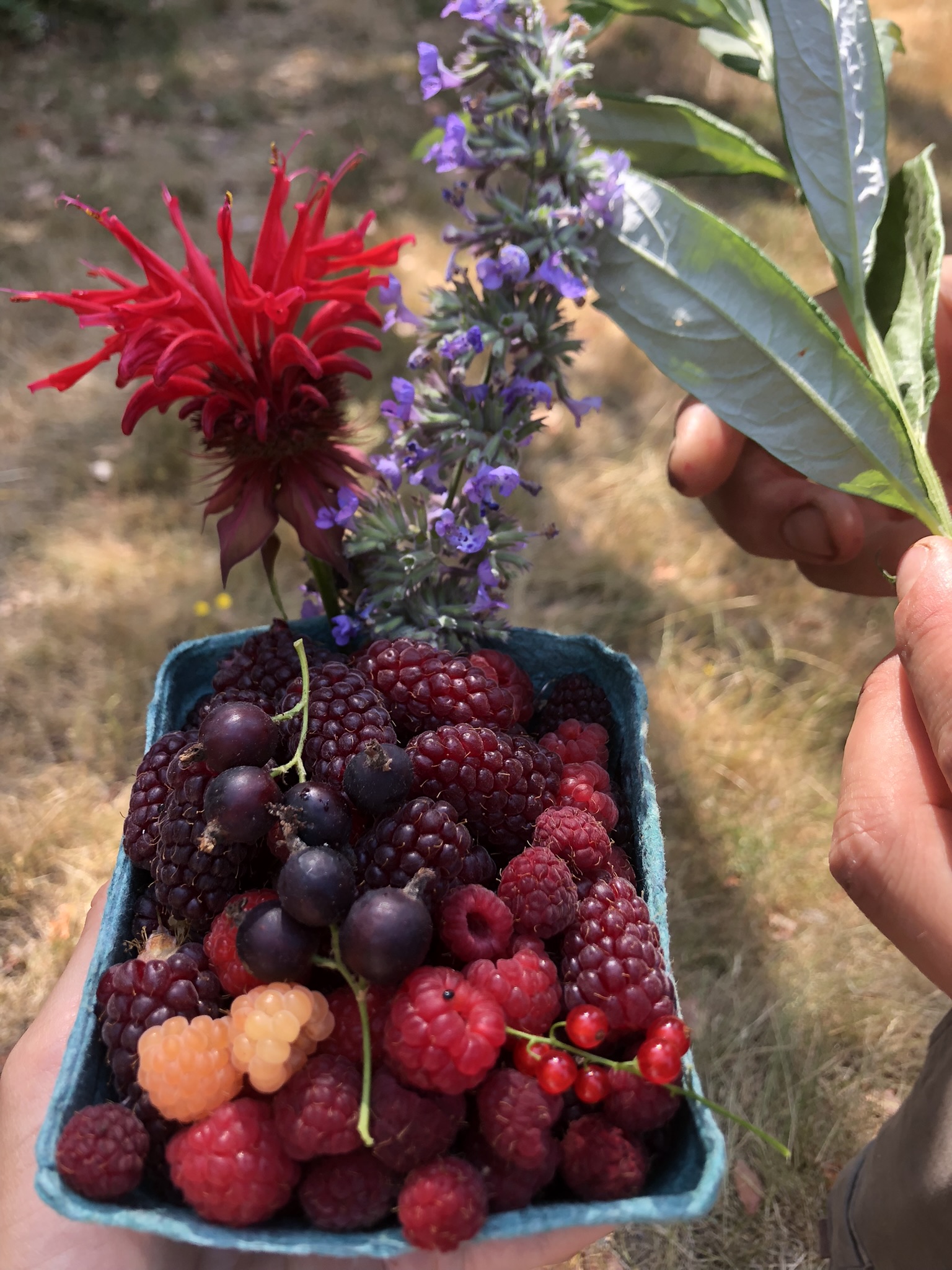Starks Rd Food Forest – 3 Year Case Study
This is an experiment to grow food and restore the ecology and life to a degraded piece of land. We started on bedrock and built a forest in under five years. Here’s some pictures of the progression.
Getting Started – Preparing the Land in the Fall
At first we cleared the space in July 2020. We cut the invasive plants, lopped the broom and blackberry plants close to the ground. We kept all native plants on the edges intact. We weed whacked the grass on site, then laid Cardboard with the tape removed to cover the growing area. Each bed was about 40-50ft long by 3ft wide. We have bedrock, no soil, baking hot, with a slight south facing slope. So the design was to build five beds on contour and use permaculture principles and Ecological Succession to rapidly build soil and turn a degraded bedrock slope into a forest. We Dropped Hay Bales on Contour, to build the edge of the beds and hold the soil / compost. We built our soil from scratch using free horse manure. We added wood chips on top of cardboard to build the pathways. We scattered cover crops of peas and buckwheat on top of the manure which grew up quickly and got munched on by birds and other creatures. We then mulched with Maple Leaves in the Fall, and Seaweed in the Winter.
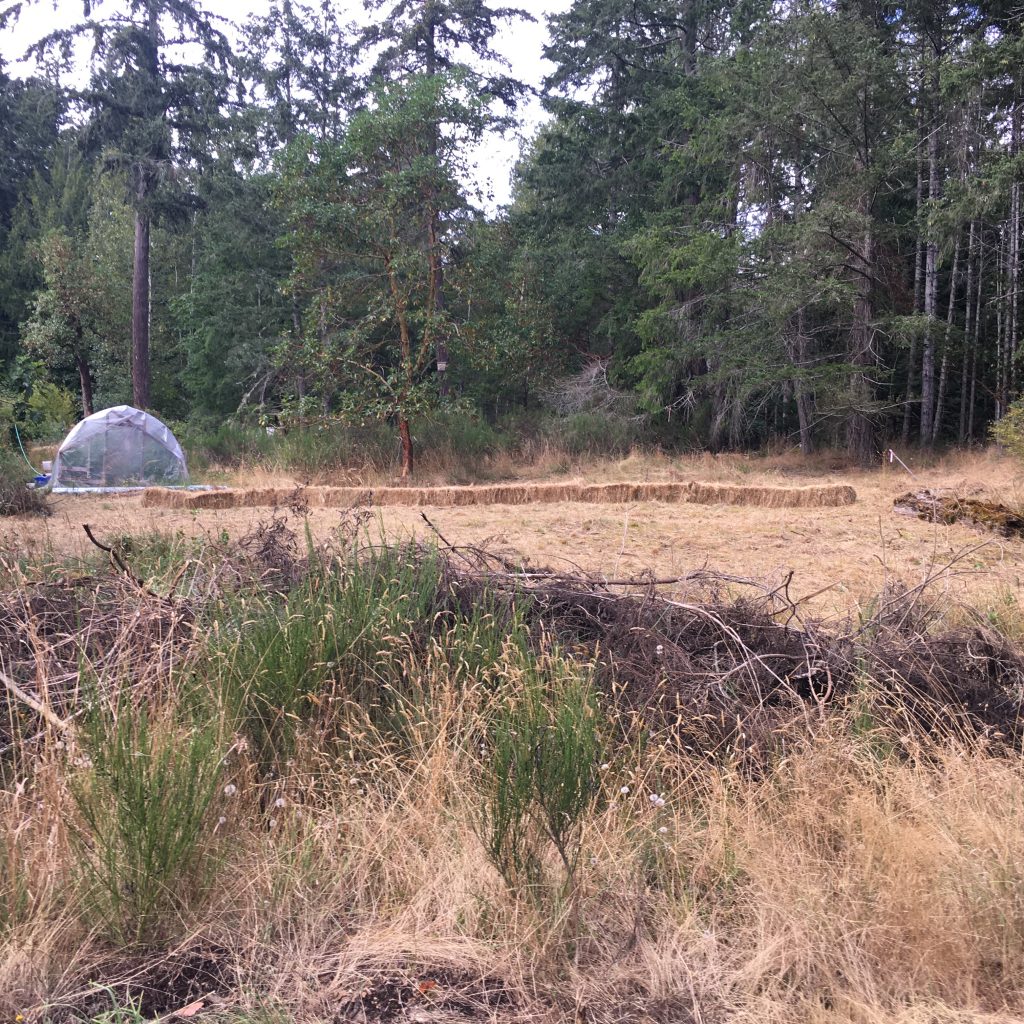


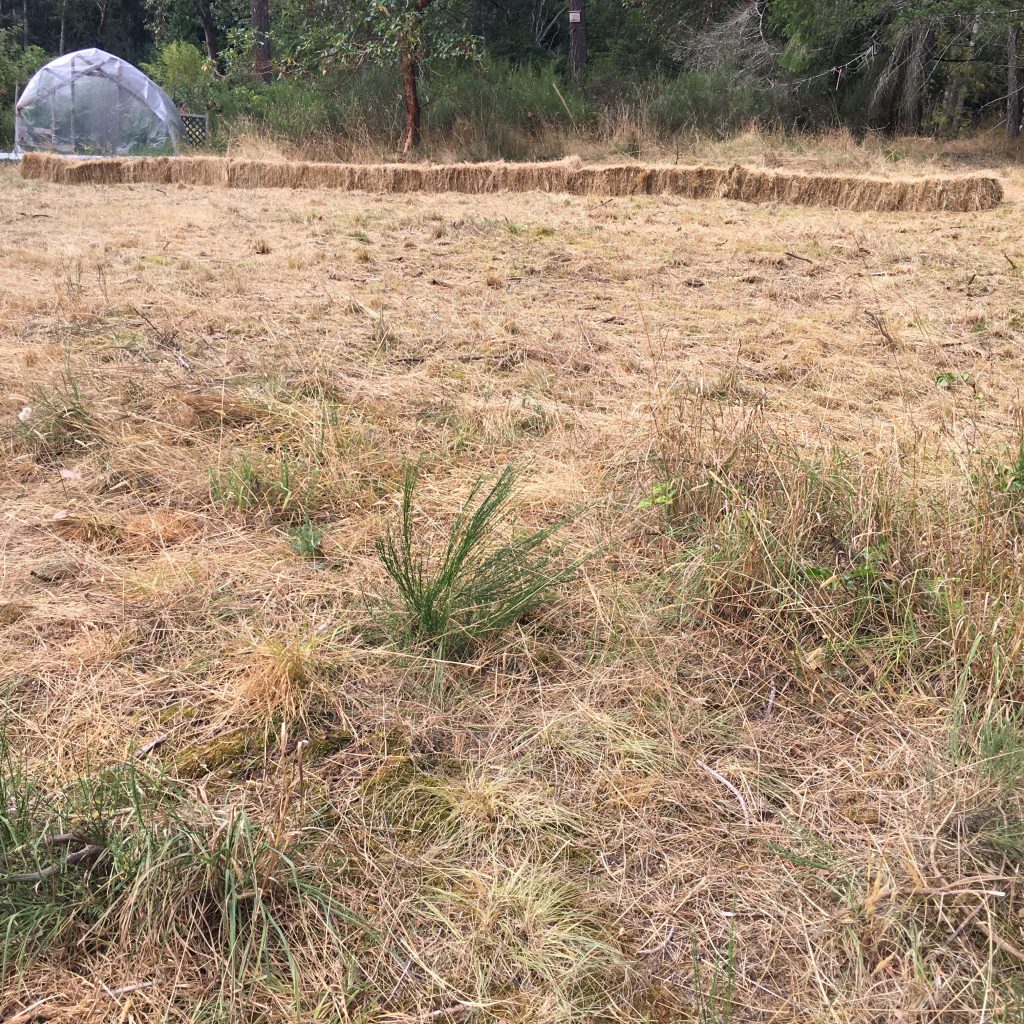

First Year – Fencing & Planting Annual Garden
The first year of planting was 2021. We first built a fence using salvaged fencing and cedar posts from dead wood. The manure we gathered to build the bed was not fully composted and still hot. I added a bag of Dolomite lime, Azomite Trace Minerals, and Fish emulsion in the spring to add key minerals and fertility for the garden… The Food Forest was not yet ready for trees, the first year is to build soil with early succession plants. Basically just plant a garden! So we focused on heavy feeders that were annual vegetables to transform manure into soil. In the first bed we had Dahlias planted for fun and beauty, Tomatoes for main crop, with eggplant and basil in the front. Second bed was Vining Squash, Mammoth Sunflowers, and Runner Beans a three sisters inspired mix. Third bed was Mixed Greens; kales, cabbages, italian dandelions, sorrels and herbs. Potatoes were planted under all haybales; the potatoes we placed under the bales with a shovel of compost and handful of fertilizer. . We ran a simple drip tape watering system across the Garden Beds to keep the plants watered and healthy. We also got wood shavings to lay on the pathways to retain soil moisture and reduce weeding.




First year Garden – Summer & Fall 2021








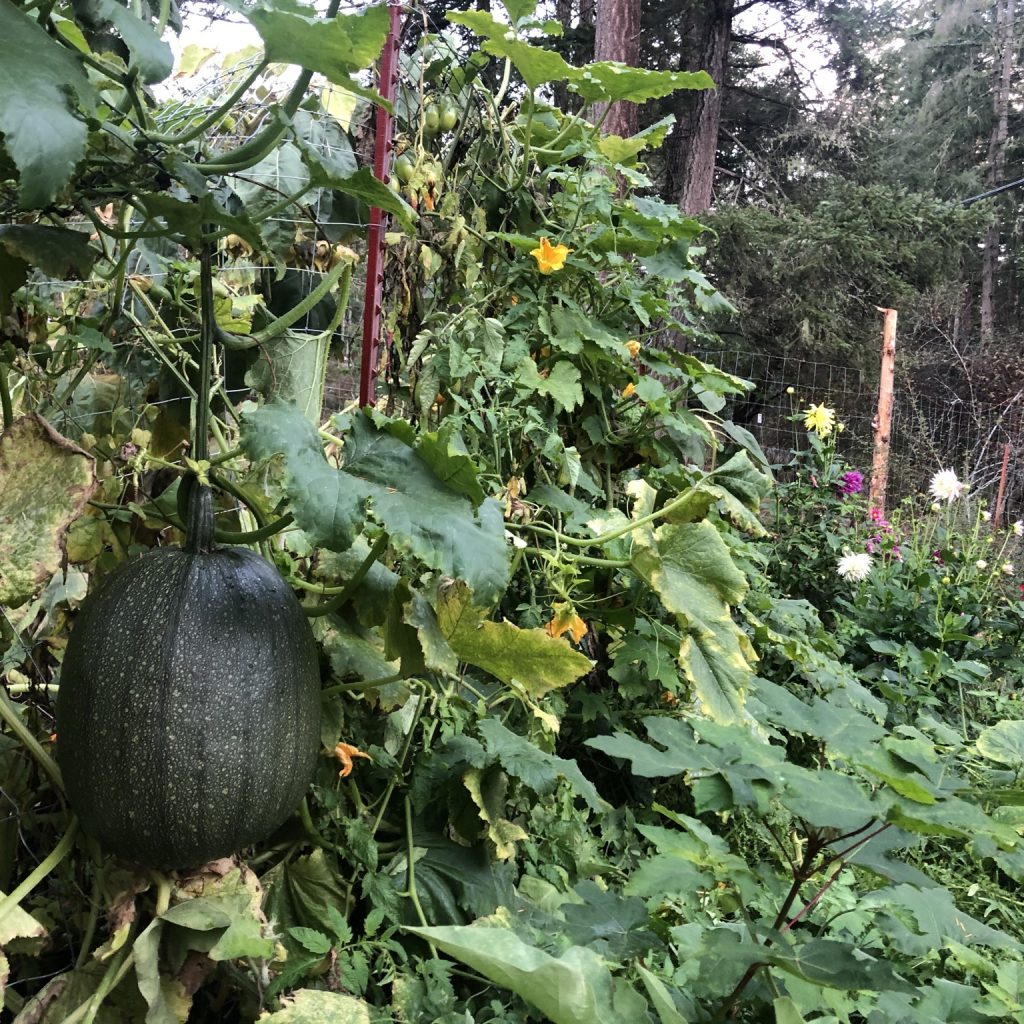
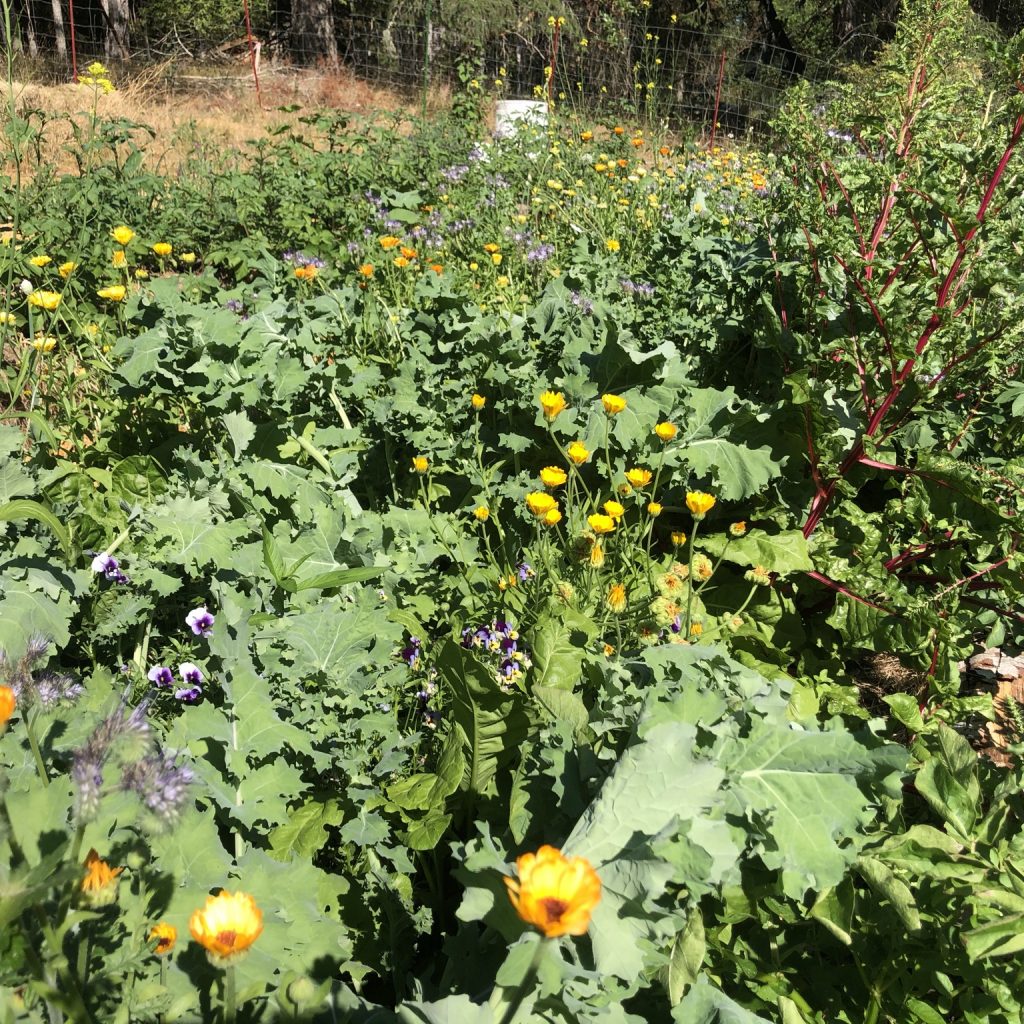
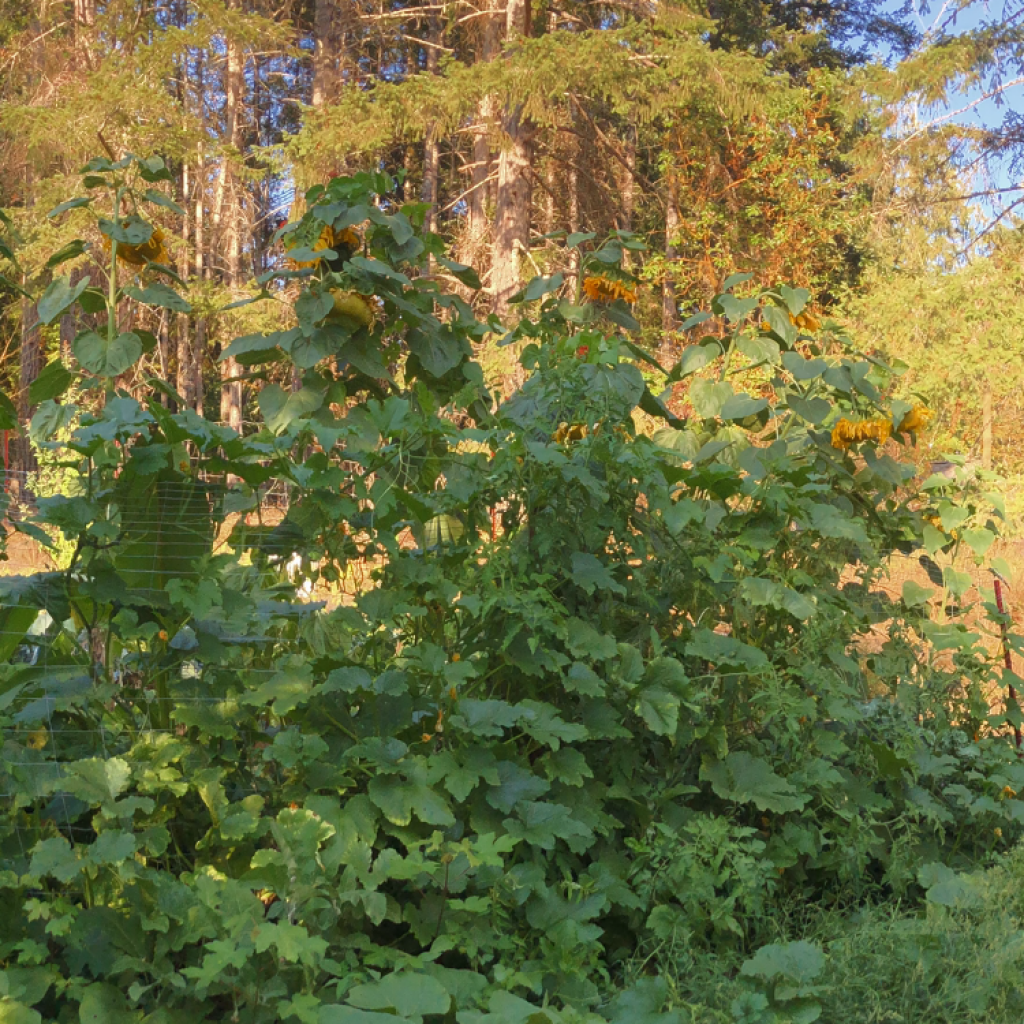
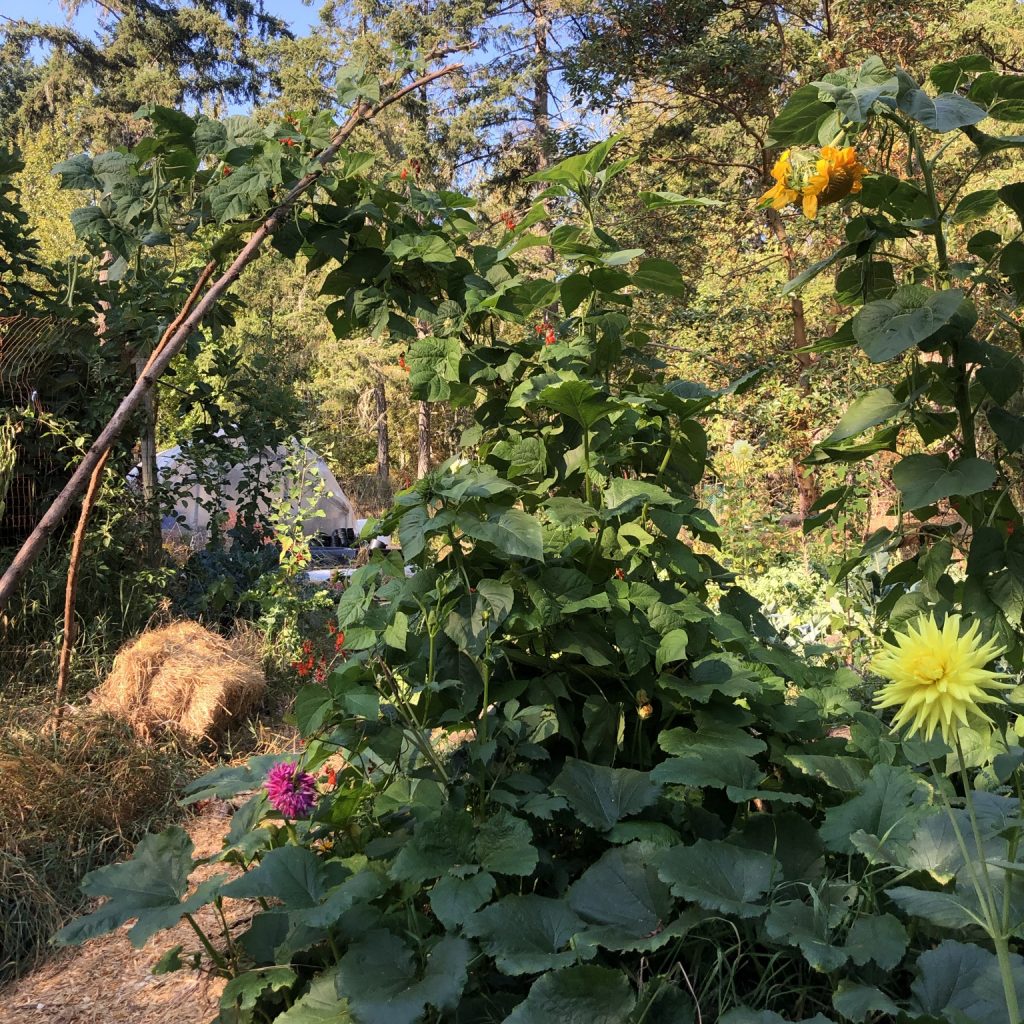
The Second Year of the Food Forest, we started to transition the space into a Forest. We were also moving, starting a farm at a new location, and building a home. It didn’t get as much attention this year. However, if we wanted to have a food forest, It was time to start planting the berries, trees, vines, and herbs! First we replaced the Haybales edges with new haybales or Edged the Beds with Alder Logs. We also added more dolomite as the soil indicated low calcium the first year. The Beds we build were about 45 long so we planted three trees in each bed on 15ft spacing between trees. Each bed also had a berry or support tree planted between the trees.
- Bed 1: Figs & Nectaries . Mulberries, Josta
- Bed 2: Mulberry, Elderberry. Raspberries
- Bed 3: Apple, Plum. Raspberries
- Bed 4: Persimmon, Gingko. Gooseberry, Currants
- Bed 5: Figs, Dwarf Cherry. Tayberries on Fenceline.
In the top Bed Figs and Nectarines with Mulberries, Silverberry and Josta in between. In the Second Bed we planted Mulberry and Elderberries with Raspberries in between. In the Third Bed we planted Apples and Plums with Raspberry in between. IN the Fourth Bed we planted Persimmon, Gingko, with Gooseberry and Blueberries in between. The Fifth, Sunniest Bed, we planted Figs and Dwarf Cherries, With a Line of Tayberries in the middle. Upon reflection, The Garden Beds that were fully planted out did much better than those that were not completely filled. I underestimated how many plants, especially groundcovers and herbs that I needed to fill out the space!
Second Year Food Forest – Planting Trees, Berries, & Herbs

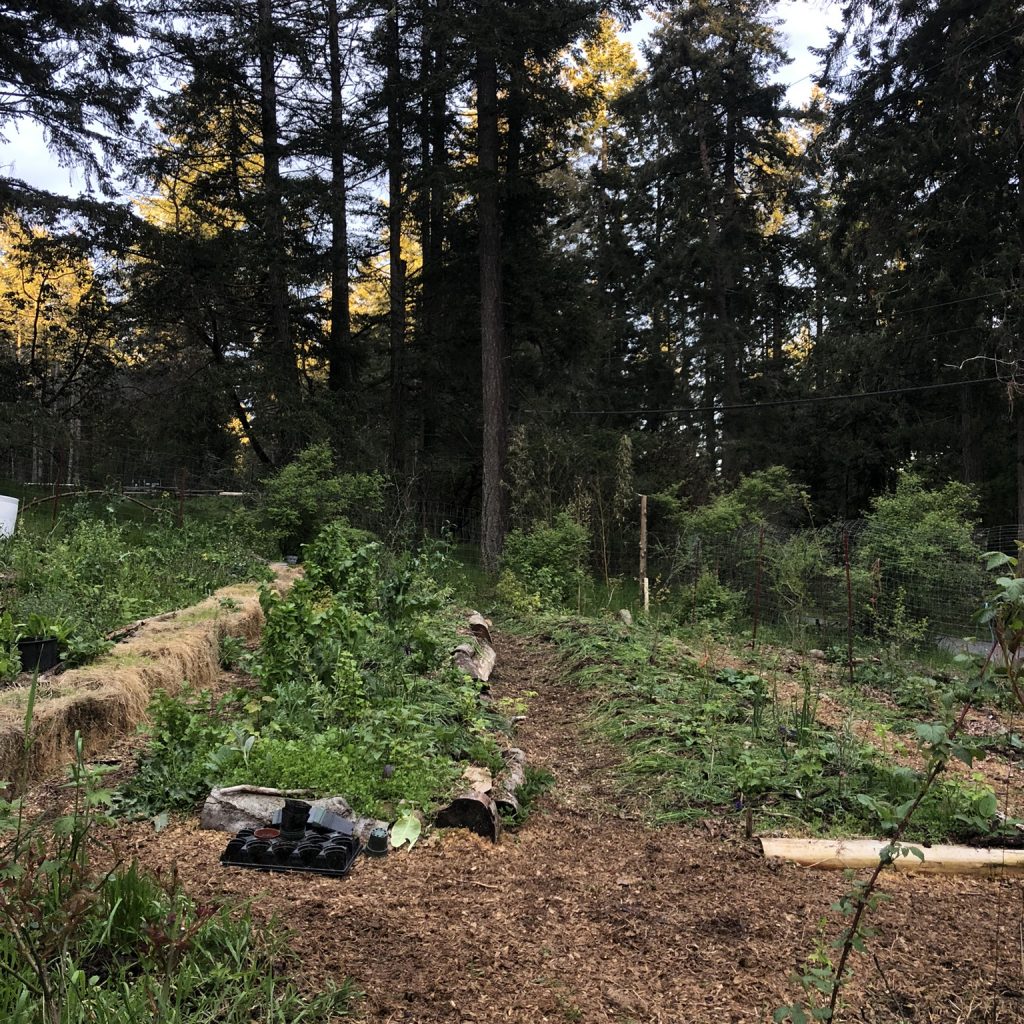
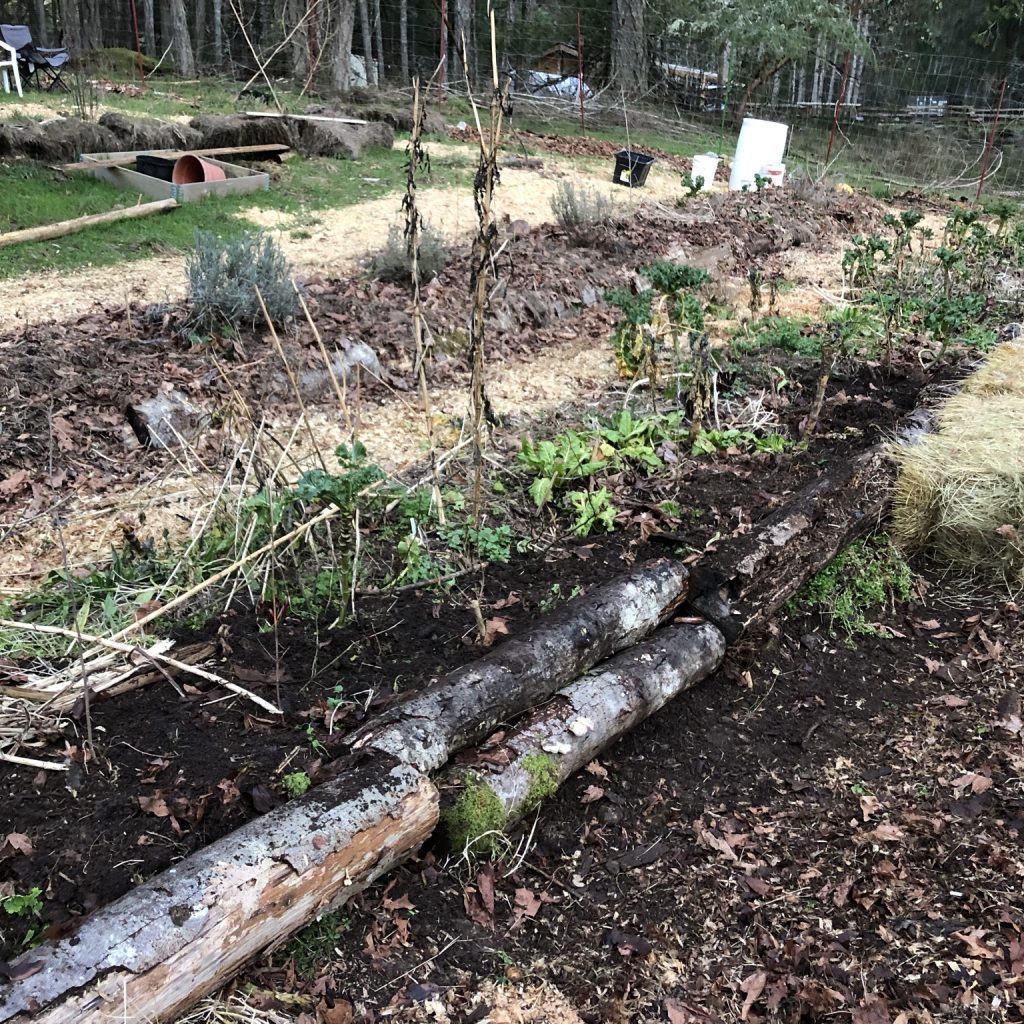

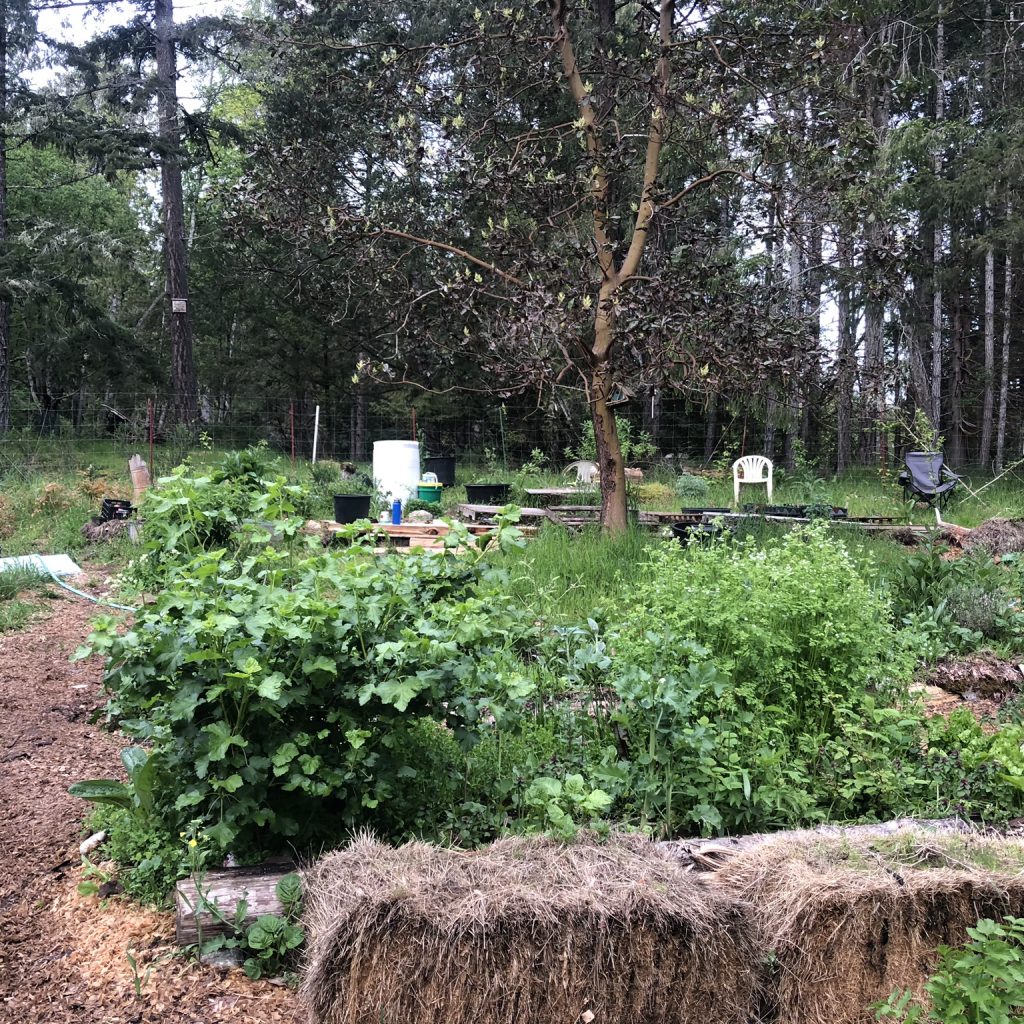
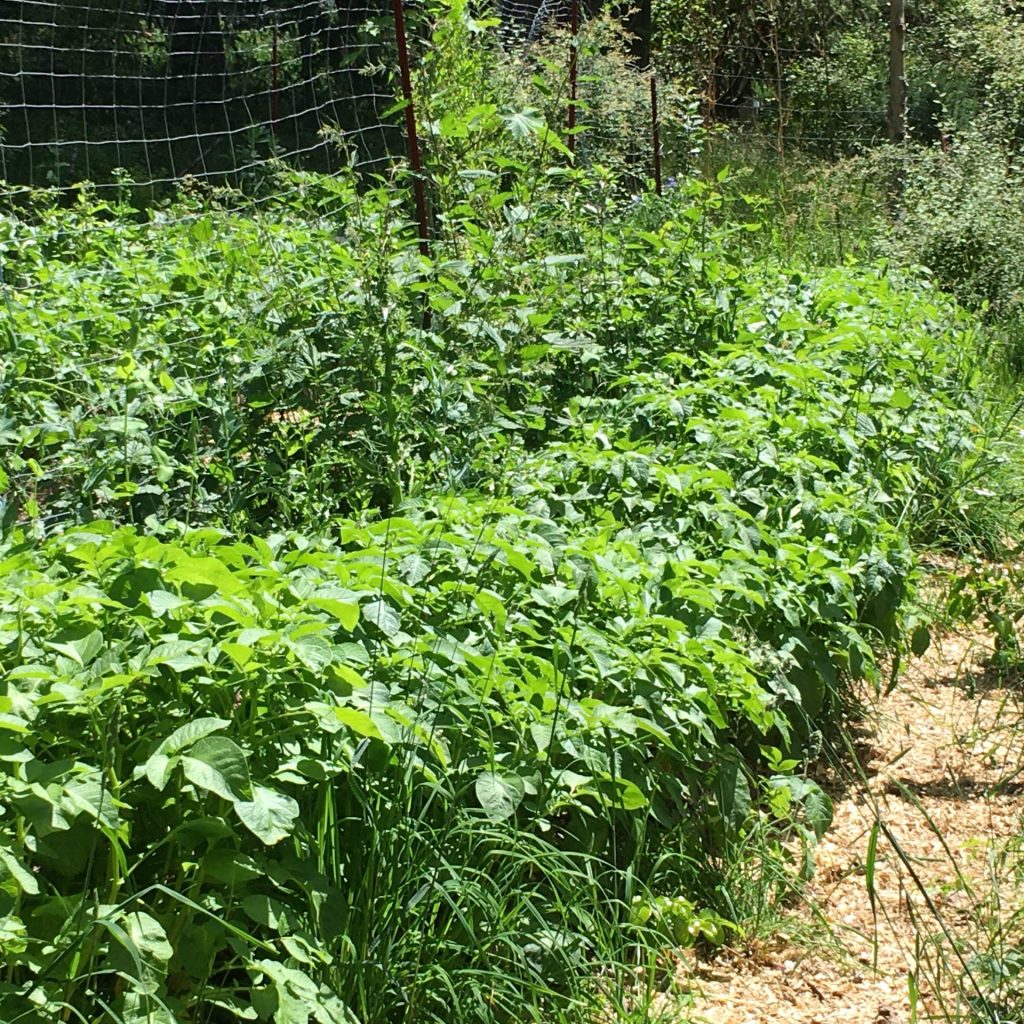
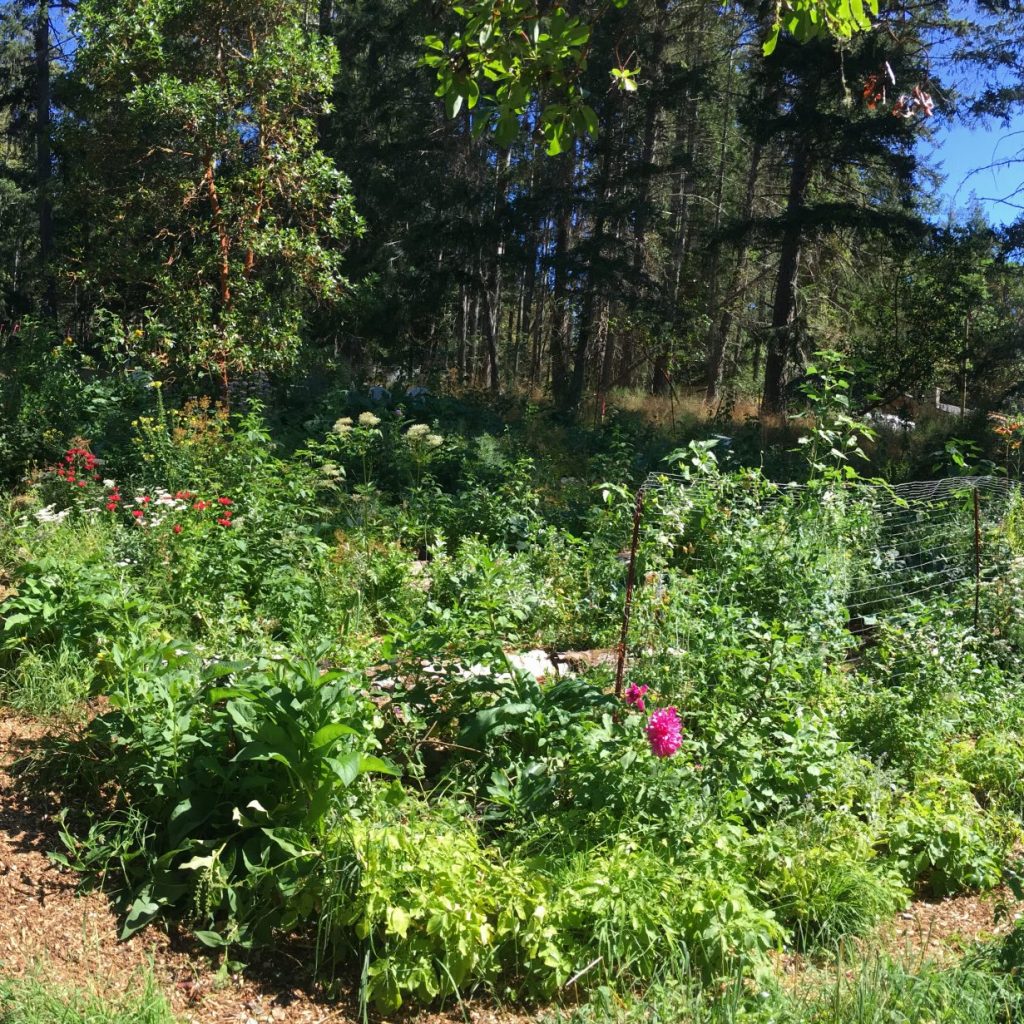



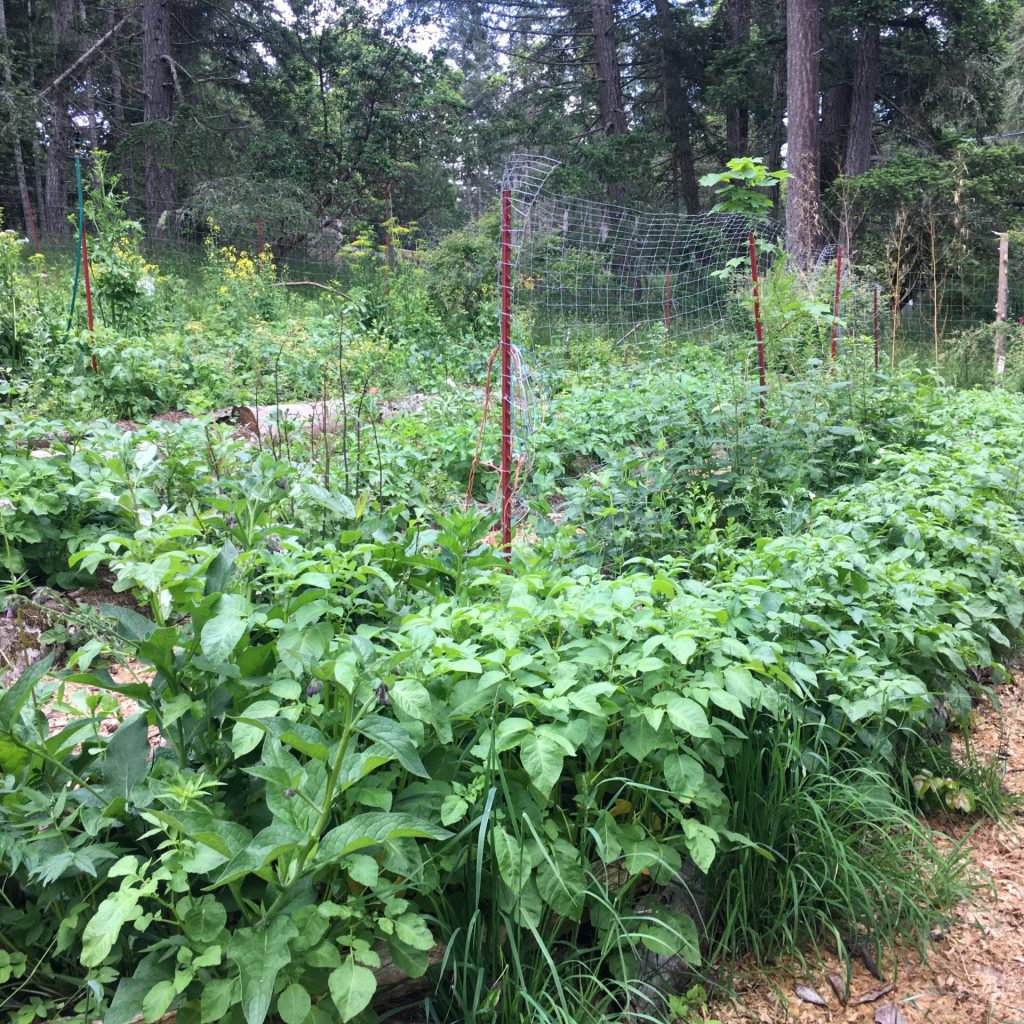
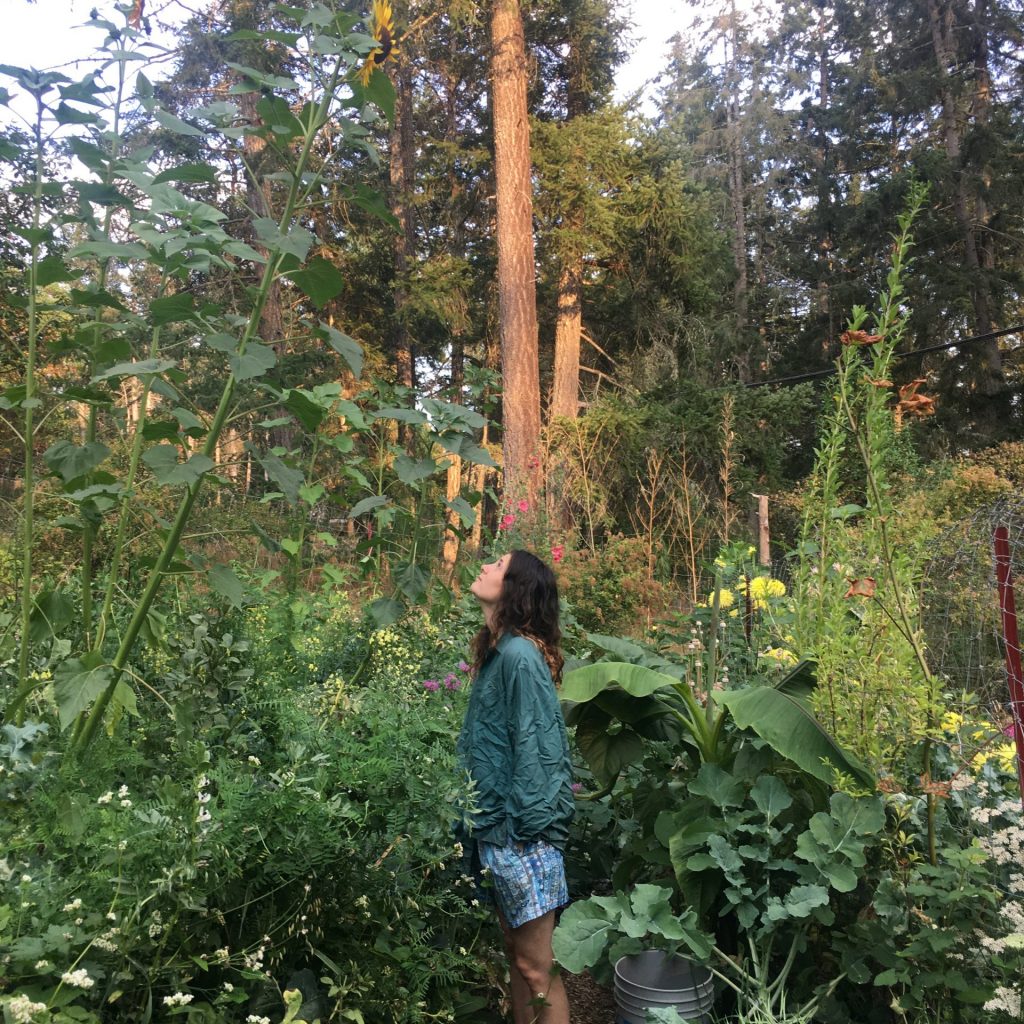
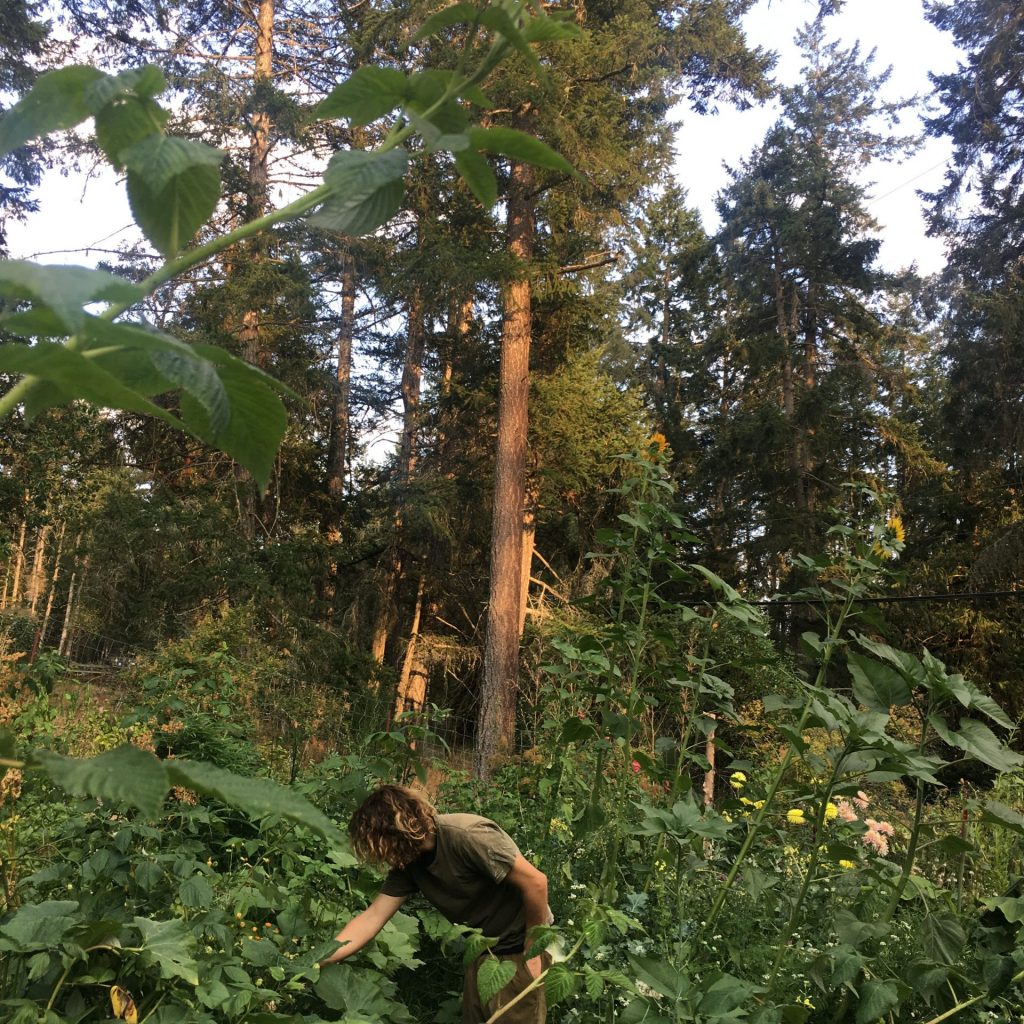




At this point we started to see an increase in the diversity of beings that were living in this space. The experiment was to see if we could make the space come to life, and get a yield without a lof of maintenance. As we increased the diversity of perennials especially ones that provided habitat and food, we saw a variety of new beings move into the space. This was quite exciting for us…
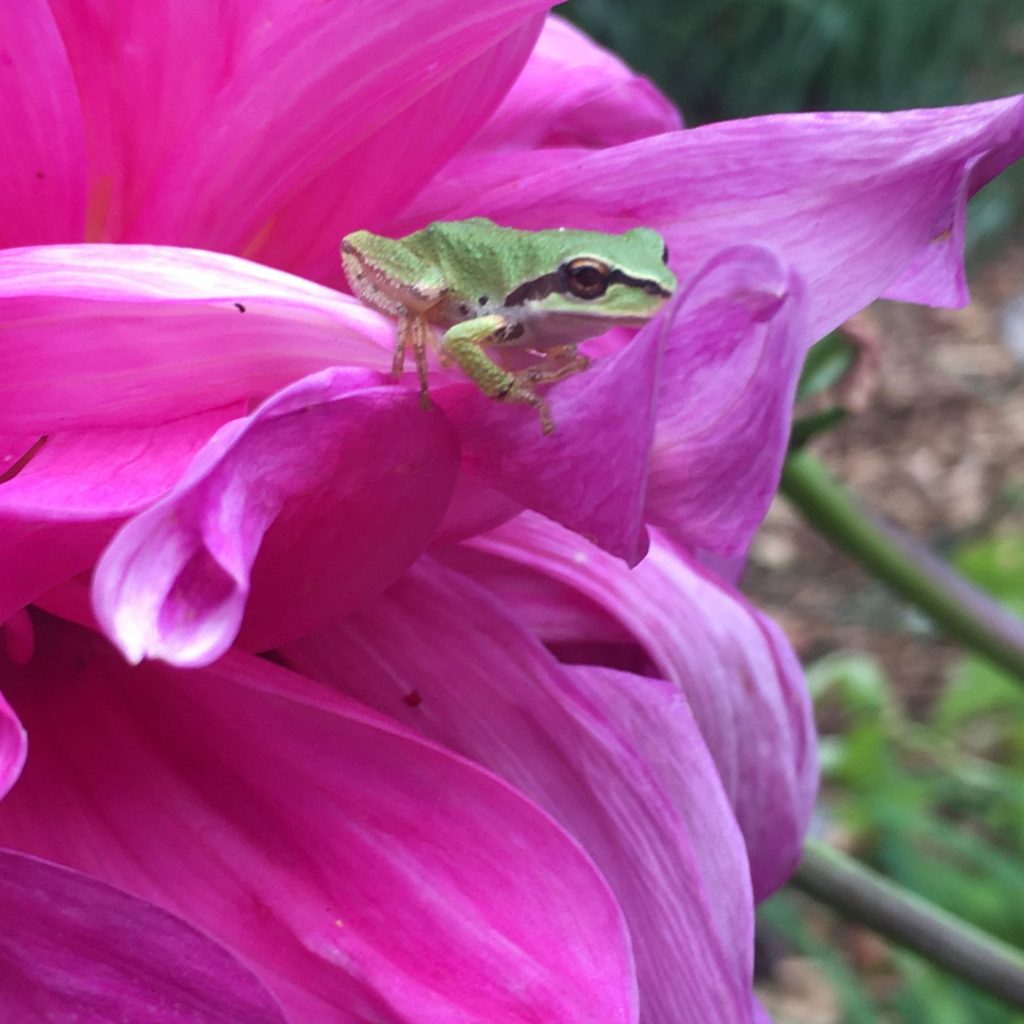

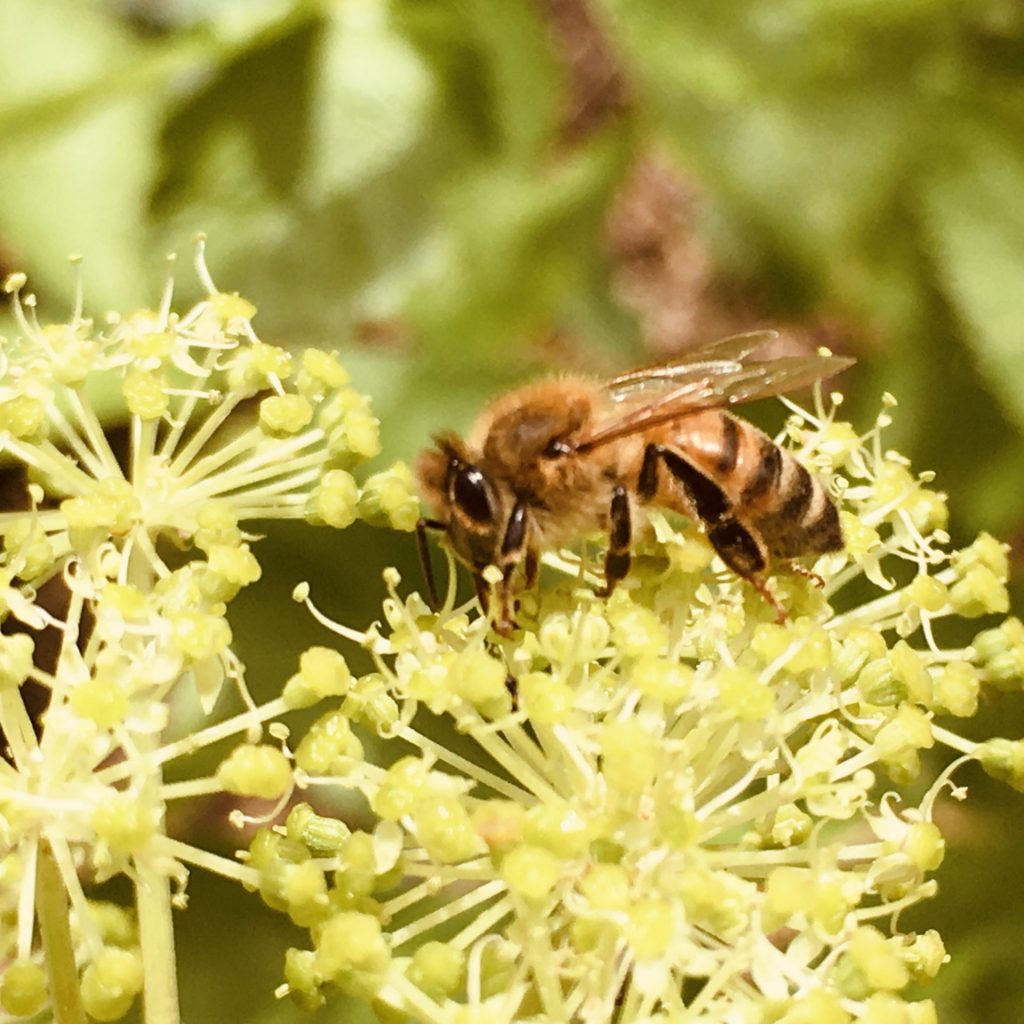
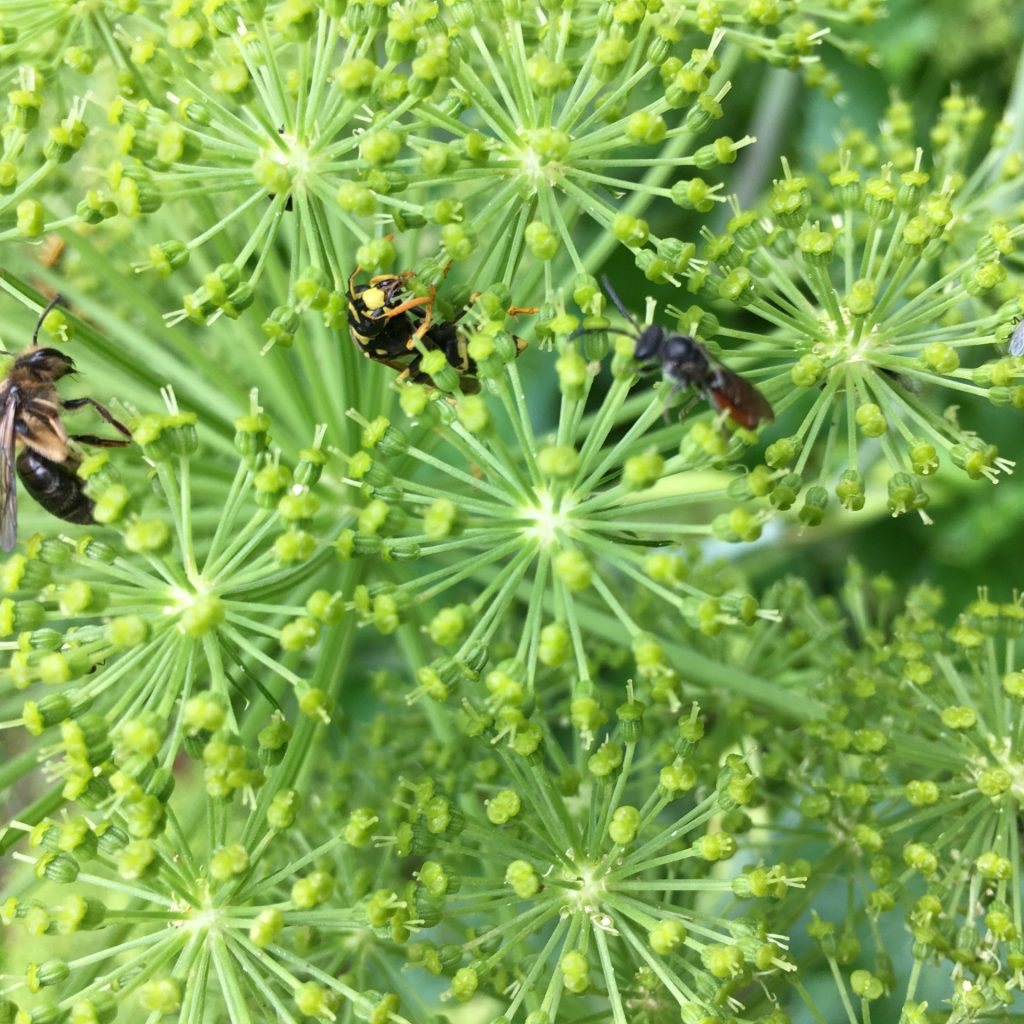
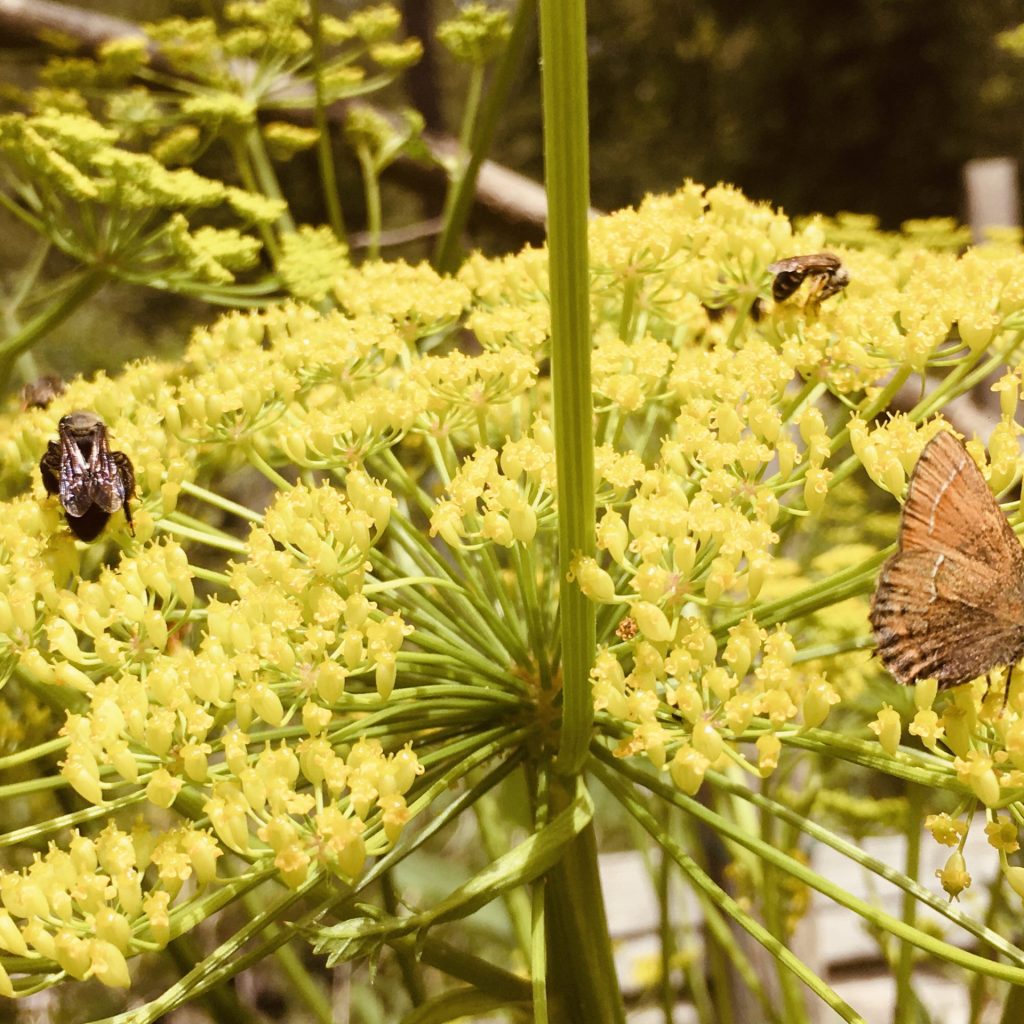
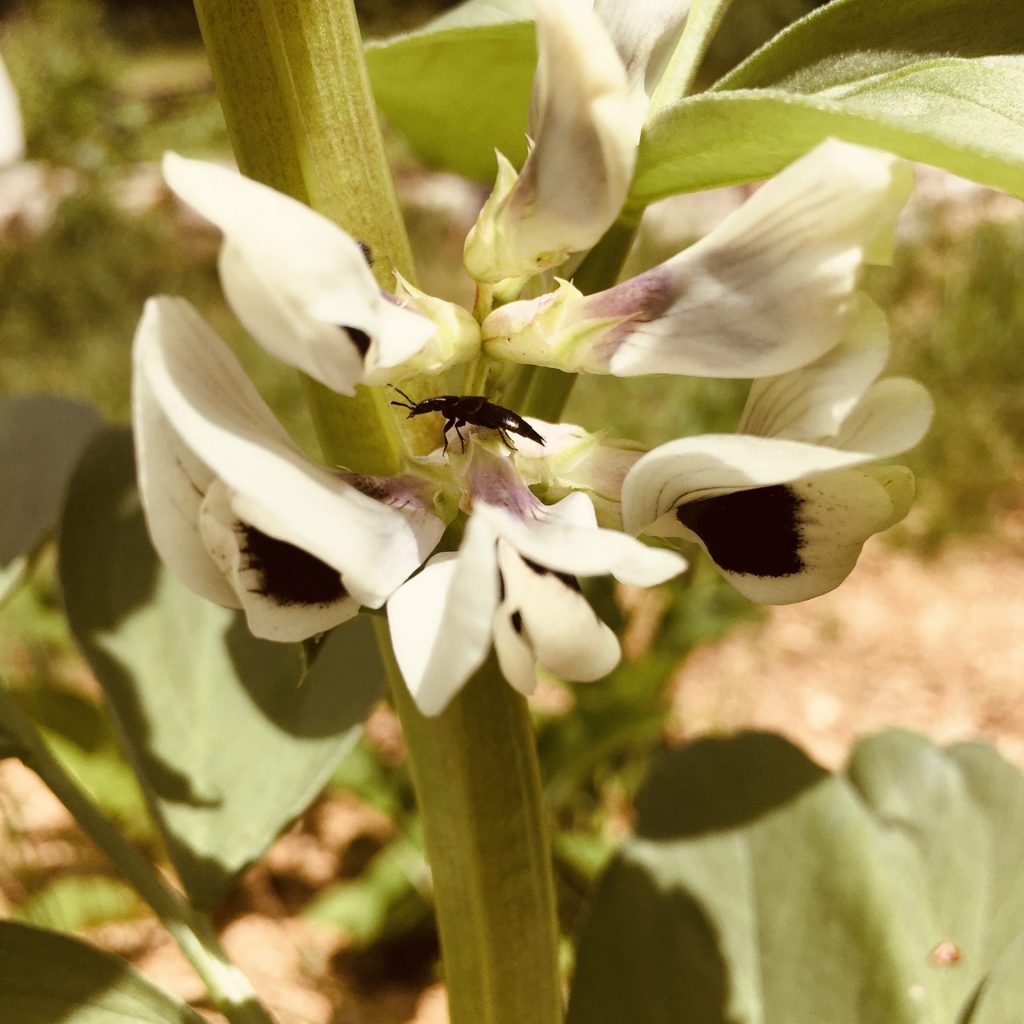

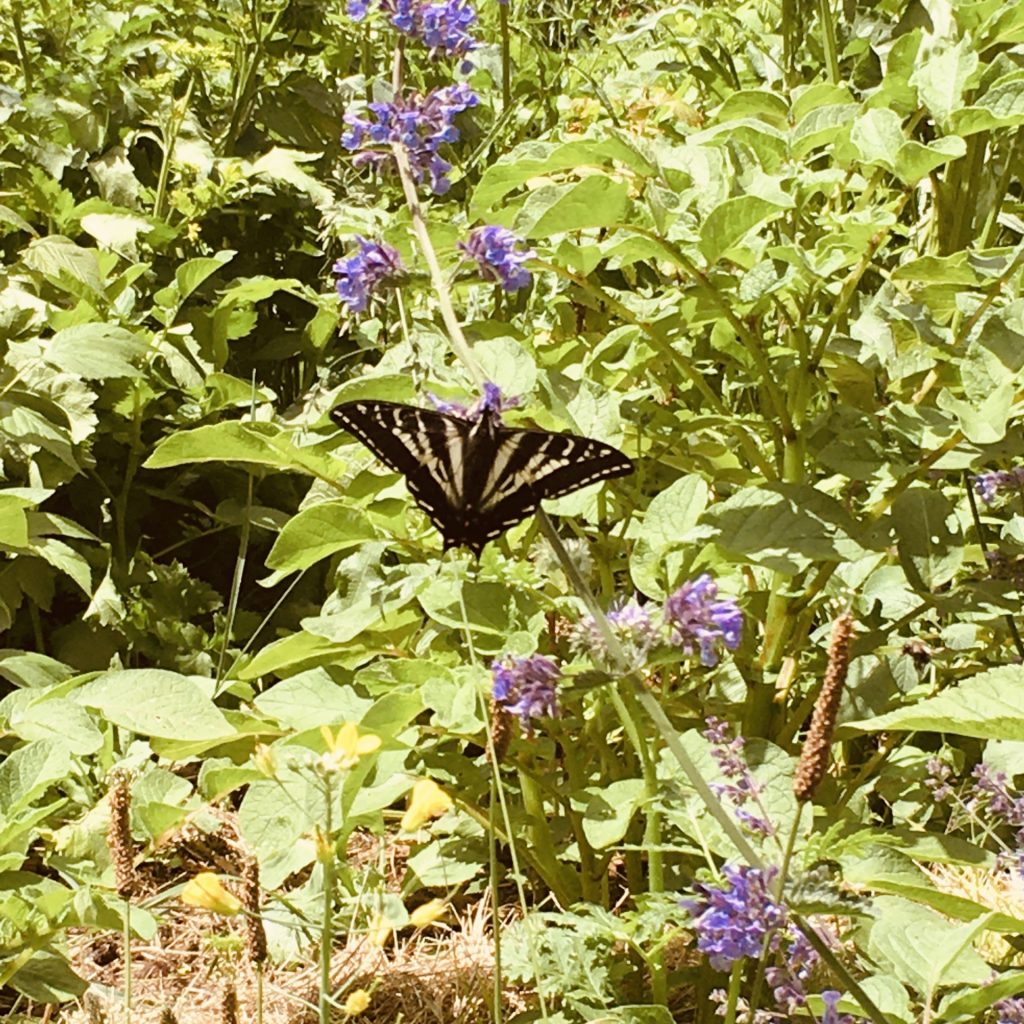
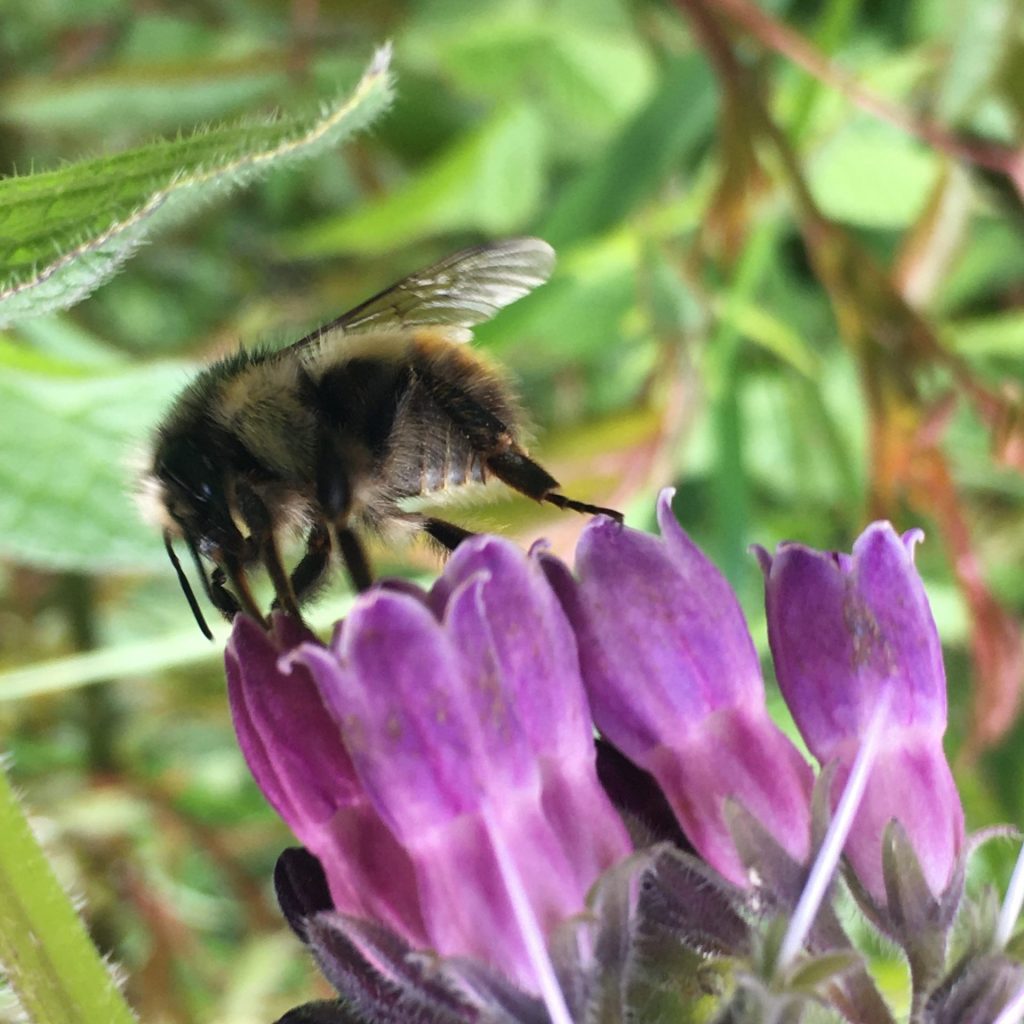







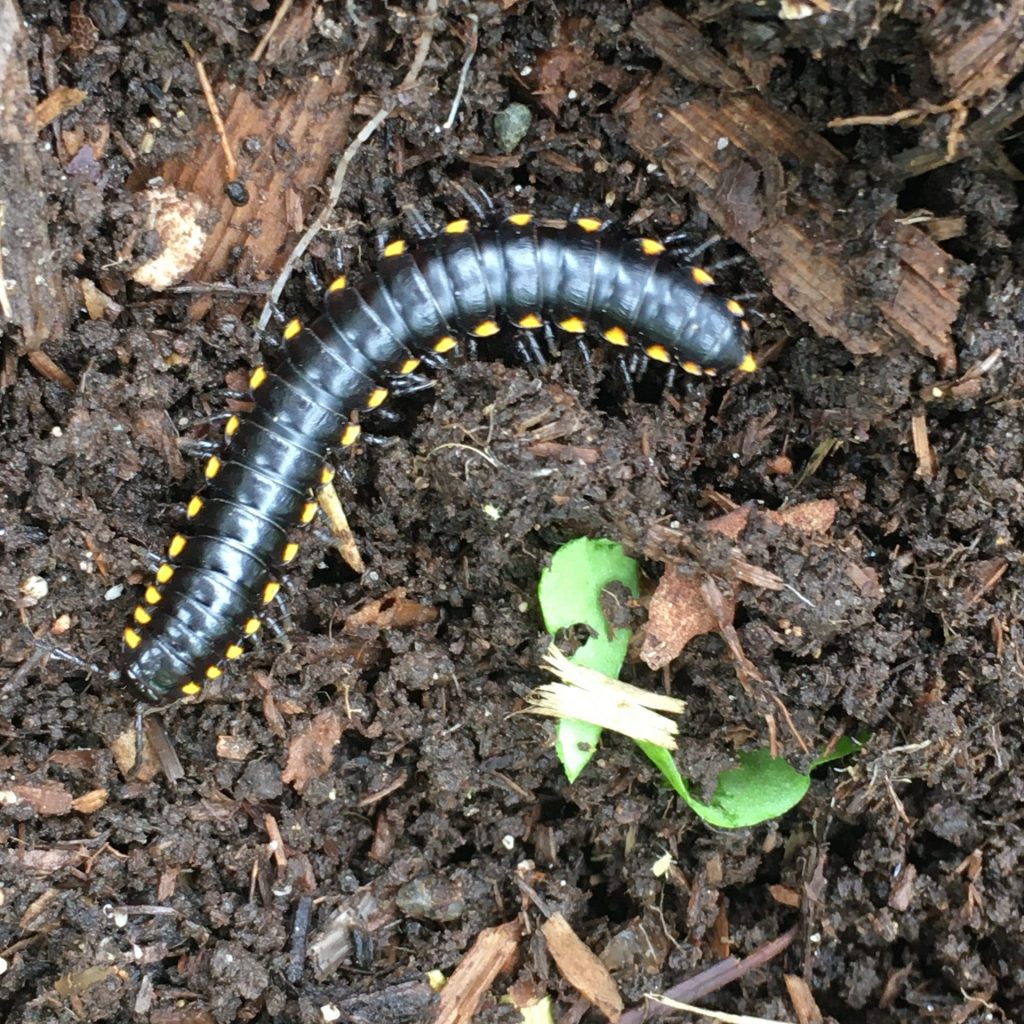

Third Year – 2023
We started to get a large yield of berries, especially Raspberries, Golden raspberries, Josta berry and Tayberries.



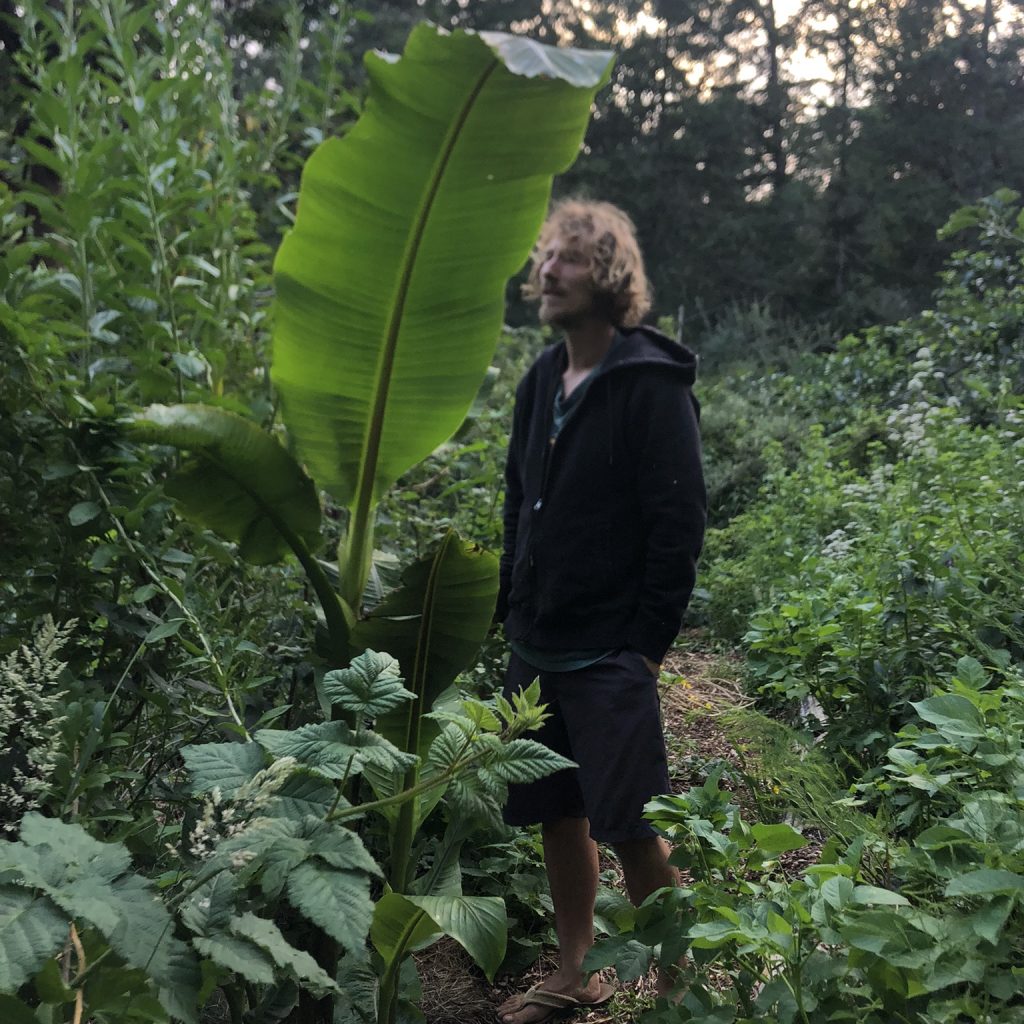



Send a message if you liked this content. We are working on an update for Year 2024 & Beyond!


